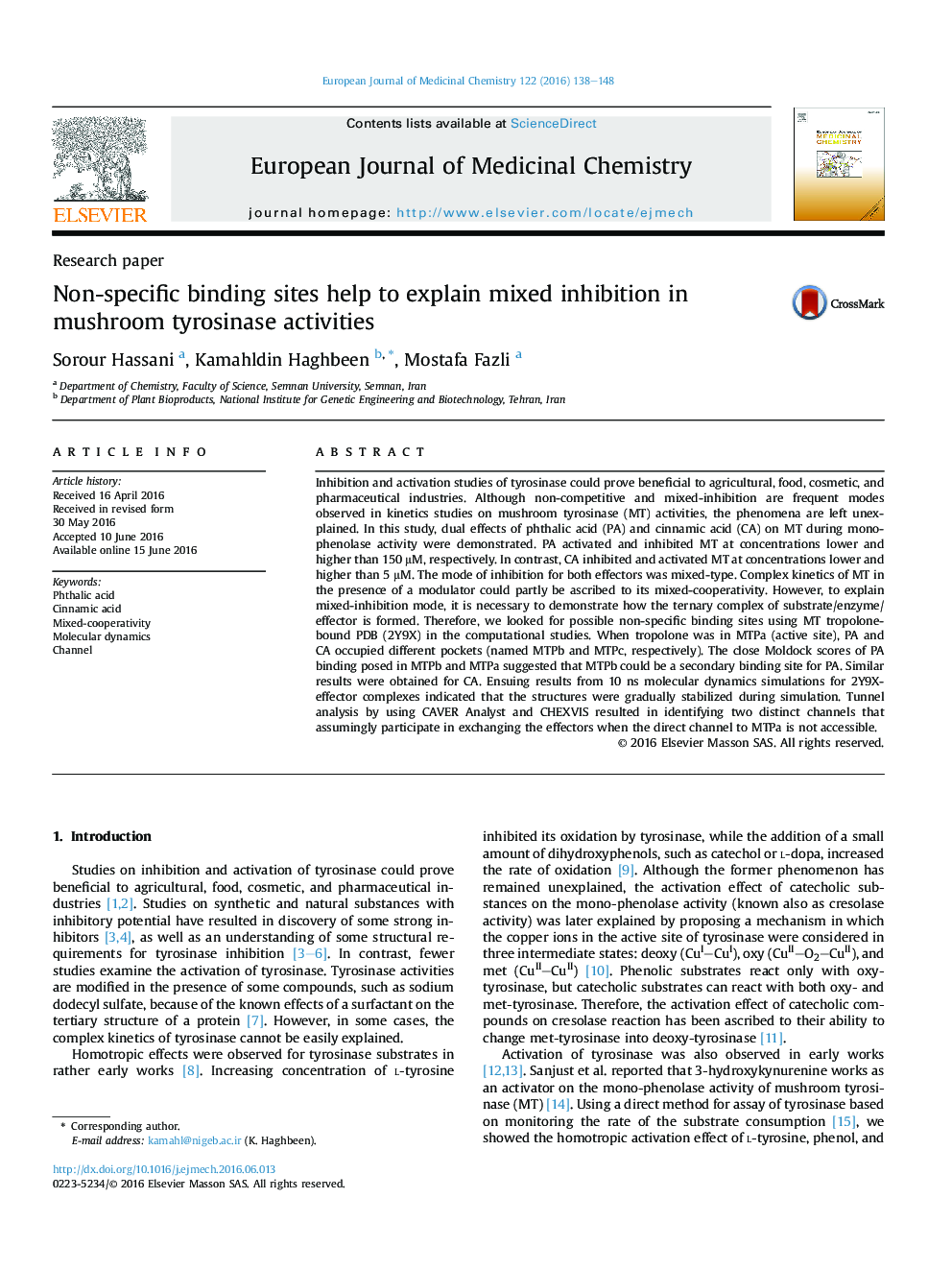| کد مقاله | کد نشریه | سال انتشار | مقاله انگلیسی | نسخه تمام متن |
|---|---|---|---|---|
| 1394911 | 1501094 | 2016 | 11 صفحه PDF | دانلود رایگان |
• Dual effect of phthalic acid (PA) and cinnamic acid (CA) on mono-oxygenase activity of mushroom tyrosinase (MT) was shown.
• Both effectors followed mixed inhibition pattern.
• To explain mixed inhibition, formation of ternary complex of Substrate/MT/Effector was shown by computational methods.
• Two non-specific binding sites, one for PA and one for CA, were found on MT.
• Each non-specific binding site is connected to the enzyme active site through a channel.
Inhibition and activation studies of tyrosinase could prove beneficial to agricultural, food, cosmetic, and pharmaceutical industries. Although non-competitive and mixed-inhibition are frequent modes observed in kinetics studies on mushroom tyrosinase (MT) activities, the phenomena are left unexplained. In this study, dual effects of phthalic acid (PA) and cinnamic acid (CA) on MT during mono-phenolase activity were demonstrated. PA activated and inhibited MT at concentrations lower and higher than 150 μM, respectively. In contrast, CA inhibited and activated MT at concentrations lower and higher than 5 μM. The mode of inhibition for both effectors was mixed-type. Complex kinetics of MT in the presence of a modulator could partly be ascribed to its mixed-cooperativity. However, to explain mixed-inhibition mode, it is necessary to demonstrate how the ternary complex of substrate/enzyme/effector is formed. Therefore, we looked for possible non-specific binding sites using MT tropolone-bound PDB (2Y9X) in the computational studies. When tropolone was in MTPa (active site), PA and CA occupied different pockets (named MTPb and MTPc, respectively). The close Moldock scores of PA binding posed in MTPb and MTPa suggested that MTPb could be a secondary binding site for PA. Similar results were obtained for CA. Ensuing results from 10 ns molecular dynamics simulations for 2Y9X-effector complexes indicated that the structures were gradually stabilized during simulation. Tunnel analysis by using CAVER Analyst and CHEXVIS resulted in identifying two distinct channels that assumingly participate in exchanging the effectors when the direct channel to MTPa is not accessible.
Figure optionsDownload as PowerPoint slide
Journal: European Journal of Medicinal Chemistry - Volume 122, 21 October 2016, Pages 138–148
